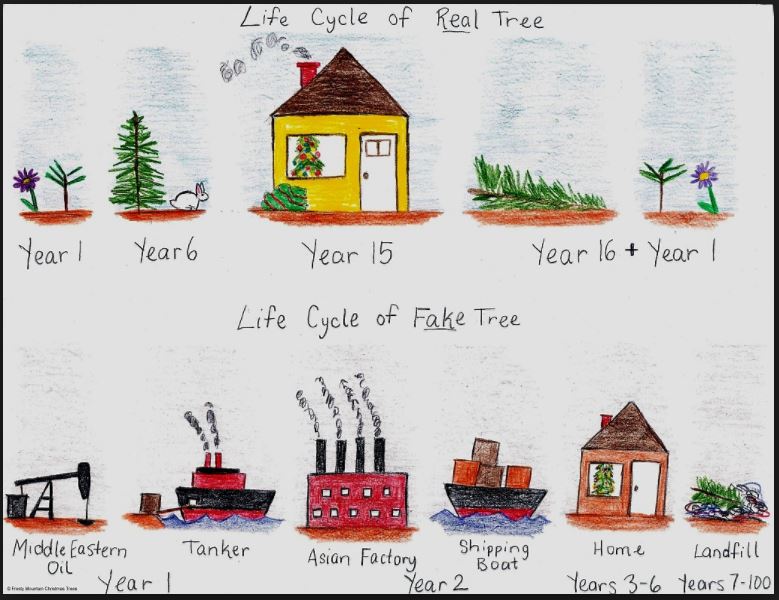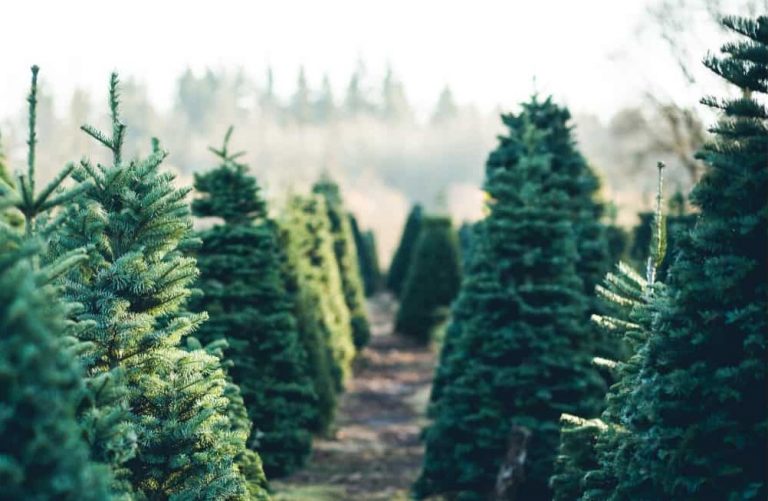
Dear Eartha, I’m looking into purchasing an artificial Christmas tree this holiday season. What are the environmental concerns for a real and a fake tree?
With the holiday season fast approaching, millions of Americans are beginning preparations and will soon be weighing their options with regard to their Christmas tree. An age-old tradition, Christmas trees help to make our homes more festive for the holiday season. Despite the joy these trees bring to us every year, the Christmas tree has sparked some heated debate with regard to environmental impact and ethicality. Here, we’ll shine some light on the advantages and disadvantages of both real and artificial trees.
The first commercially available artificial Christmas tree hit the market back in the 1930s. In an effort to eliminate ongoing seasonal tree expenses, manufacturers began offering artificial alternatives that would last several years of seasonal use. American consumers began to catch on and take advantage of a one-time tree purchase. Today, however, more consumers are exploring additional concerns regarding the environment, human health, and global economics of the artificial tree industry.
Manufactured out of PVC (polyvinyl chloride), artificial trees are not recyclable and will last forever in a landfill. PVC is a petroleum-based plastic that is non-renewable and polluting. Through the manufacturing process, PVC emits carcinogenic compounds such as dioxin, ethylene dichloride, and vinyl chloride. Furthermore, the needles on artificial trees can sometimes be treated with lead in the manufacturing process. Touching or even vacuuming around the base of an artificial tree can pose health concerns and degrade indoor air quality.
In addition to the environmental and human health impacts of artificial trees, nearly 80 percent of all artificial trees are produced in China and shipped to worldwide markets. If you decide to invest in an artificial tree for long-term cost savings and low maintenance, we suggest purchasing a non-PVC model that was manufactured in the U.S.A.

On the other side of the spectrum, real Christmas trees are still far from perfect. It’s hard for me to argue for the cutting down of real trees every year, but in comparison to artificial trees, there’s an argument to be made. In 2015, almost 27 million real trees were purchased during the holiday season, double that of their artificial counterparts. Christmas trees are a commercially farmed agricultural commodity with roughly 350 million trees currently growing on farms across the U.S. Every year, nearly 30 million trees are harvested from this supply and replanted on an annual cycle. While farming Christmas trees may be argued as unethical in comparison to farming food, if a real tree is properly disposed of, several studies have found that there’s still an environmental advantage to supporting the real tree industry.
For an artificial tree to have a lower environmental impact than real trees, you’ll need to hang on to that artificial tree for at least a decade. Additionally, if you purchase a locally grown real Christmas tree, you’re supporting a local farmer and reducing the emissions involved in long-distance transportation. To make the real Christmas tree more environmentally friendly, you must properly dispose of your tree.
Luckily in Summit County, our towns support the proper disposal of Christmas trees every year. Christmas trees can be brought to conveniently located disposal sites in each town, and are typically open up to a month after Christmas day. This free disposal service ensures that trees are composted back into nutrient-rich soil. Drop-off locations may change from time to time, so check in around Christmas for updated information on HC3’s Yard Waste page.
While both artificial and real trees have their disadvantages, the real Christmas tree is still where we tend to lean. If you want to be a holiday season all-star, forgo the notion of an indoor Christmas tree. Consider planting a new tree outside your home that can be decorated and enjoyed from a distance every holiday season.
High Country Conservation Center is very grateful for our partnership with Summit Daily Newspaper and their publication of the Ask Eartha Column every Monday. Check out this article here.
*Image Courtesy of Frosty Mountain Christmas Tree
[vc_facebook type=”standard”]
